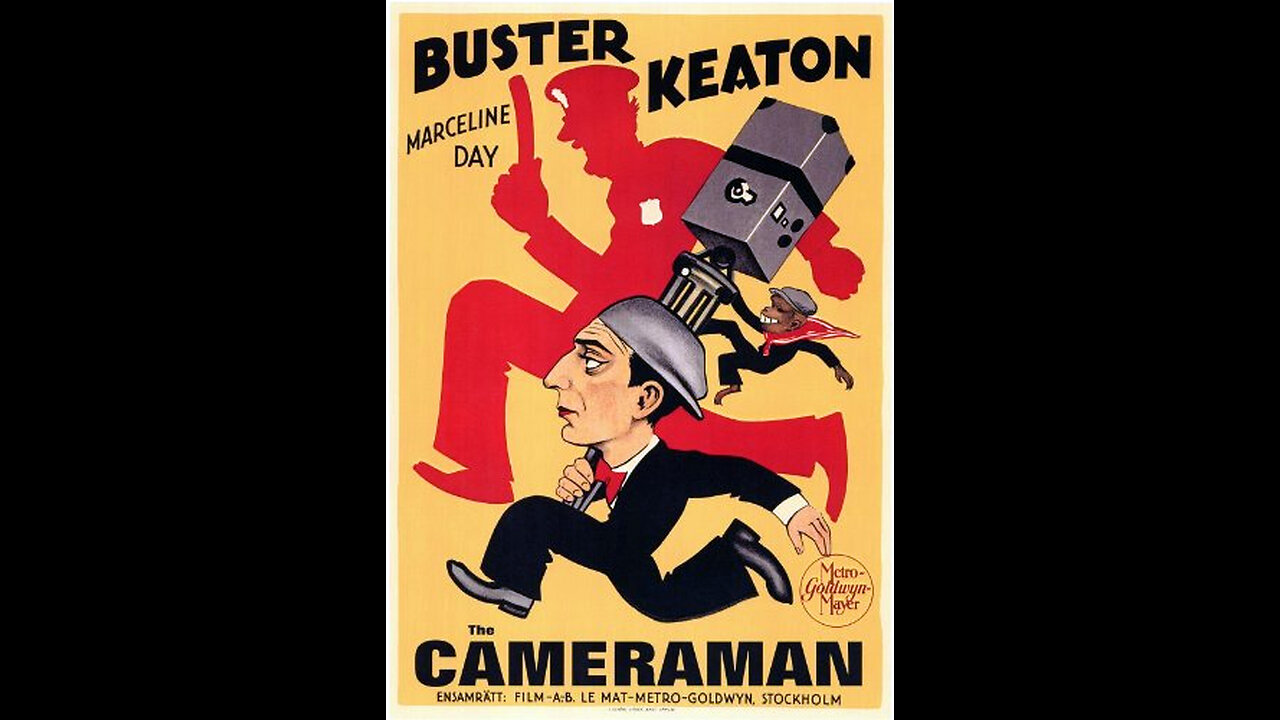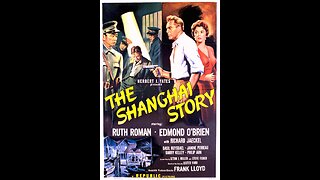Premium Only Content

The Cameraman (1928) | Directed by Edward Sedgwick and Buster Keaton
The Cameraman was released on September 16, 1928, during the late silent film era. This film, directed by Edward Sedgwick and Buster Keaton, tells the story of Buster (played by Keaton), a humble tintype photographer who falls in love with Sally, a secretary at a newsreel company. Determined to win her heart, Buster trades his camera for a movie camera and tries to become a newsreel cameraman. Throughout the film, Buster encounters various misadventures, including comedic mishaps with his new camera, a chaotic trip to a public pool, and a thrilling rescue during a Tong war in Chinatown. Despite his many failures, his determination and quick thinking eventually lead him to success, both professionally and romantically.
The Cameraman was one of Buster Keaton's last films as an independent filmmaker before moving to MGM, where he would lose creative control over his work. Initially, the film received mixed reviews and was not a major commercial success. However, it has since been re-evaluated and is now considered one of Keaton's best films. The film is praised for its inventive gags, flawless timing, and Keaton's ability to blend comedy with emotional depth. In 2005, it was selected for preservation in the United States National Film Registry by the Library of Congress for being "culturally, historically, or aesthetically significant."
Buster Keaton as Buster: The protagonist, a tintype photographer turned cameraman.
Marceline Day as Sally: The love interest and secretary at the newsreel company.
Harold Goodwin as Stagg: Buster's rival and a more experienced cameraman.
Sidney Bracey as the Boss: The head of the newsreel company who is skeptical of Buster's abilities.
The Cameraman is often hailed as a cinematic masterpiece, showcasing Keaton's unparalleled talent in physical comedy and visual storytelling. The film is noted for its complex and meticulously timed gags, such as the scene where Buster attempts to film a parade only to find that his camera was not loaded with film. Keaton's ability to create humor through situations that are both absurd and relatable makes this film enduringly popular. The use of innovative camera work and special effects also demonstrates Keaton's creativity and technical expertise. Although The Cameraman marked the beginning of Keaton's troubled tenure with MGM, it remains one of the finest examples of his work and a quintessential piece of silent film history.
-
 1:30:11
1:30:11
Classic Films & Movies Archive
9 days agoThe Shanghai Story (1954) | Directed by Frank Lloyd
1601 -
 1:11:43
1:11:43
Roseanne Barr
7 hours ago $3.64 earned"They are all Monsters" | The Roseanne Barr Podcast #89
33.5K28 -
 9:26:16
9:26:16
Dr Disrespect
11 hours ago🔴LIVE - DR DISRESPECT - WARZONE - PR ATTEMPTS
71.4K32 -
 LIVE
LIVE
Akademiks
3 hours agoDay 1/30. Lebron checks stephen a Smith. TOry Lanez talking CRAZY asf. Lil Ronnie K*Ilers Caught
3,274 watching -
 LIVE
LIVE
I_Came_With_Fire_Podcast
7 hours agoDEPARTMENT OF EDUCATION AXED | GAZA ULTIMATUM
414 watching -
 2:16:53
2:16:53
FreshandFit
3 hours agoCall-In Show
38.3K6 -
 4:27:46
4:27:46
Nerdrotic
7 hours ago $5.62 earnedDaredevil Born Again REVIEW, Harry Potter Show DOA, DC HACKED! | Friday Night Tights 344 Paul Chato
108K34 -
 1:15:15
1:15:15
Glenn Greenwald
4 hours agoWeek in Review: Lee Fang and Leighton Woodhouse on Ukraine War and NYT Piece Revealing Tensions within Trump Admin; PLUS: Lee Fang Takes Audience Questions on DOGE and Big Tech | SYSTEM UPDATE #420
53.9K37 -
 1:03:30
1:03:30
Sarah Westall
6 hours agoMassive Government Overhaul: FBI, CIA, IRS and more to be Gutted w/ Sam Anthony
64.9K13 -
 1:07:40
1:07:40
IsaacButterfield
7 hours ago $0.39 earnedAustralia Under Attack | Trump's State of the Union | All LGBTQ Cast (W Guest Frenchy)
27.7K4